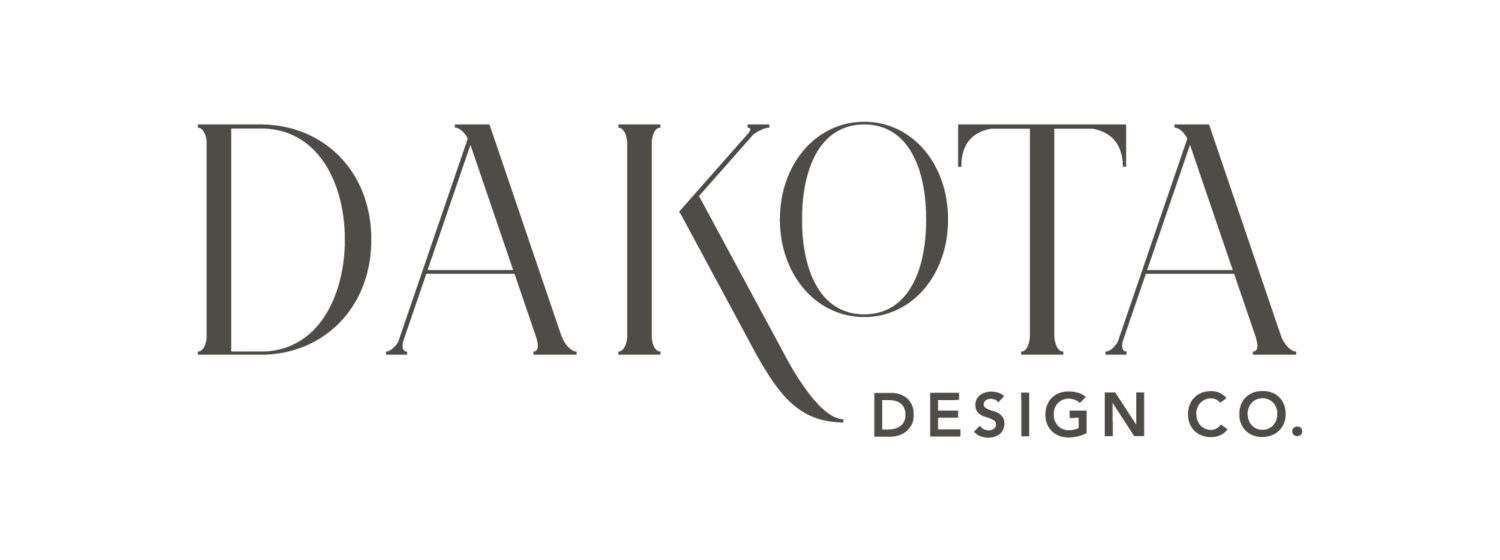Welcome to The DTS Files for Interior Designers
The DTS Files is a premium content hub for interior designers who want to grow their businesses with expert-backed strategies, real-world consulting insights, and proven frameworks.
Want full access? Subscribe now to unlock all premium content.
Already a member? Log in, then scroll down to the blog to read.
|
ACTIONABLE BUSINESS STRATEGIES
I
MEMBERS-ONLY ARTICLES PUBLISHED WEEKLY
|
PRIVATE LIBRARY OF EXPERT INSIGHTS & ADVICE FOR INTERIOR DESIGNERS
| ACTIONABLE BUSINESS STRATEGIES I MEMBERS-ONLY ARTICLES PUBLISHED WEEKLY | PRIVATE LIBRARY OF EXPERT INSIGHTS & ADVICE FOR INTERIOR DESIGNERS

Marketing That Works: 7 Must-Read Articles to Grow Your Design Business in 2025
If 2025 is the year you plan to take your interior design business to the next level, I’d bet marketing is top of mind. I know it always is for me.
Because marketing is a topic we’re asked about almost as much as pricing, I’ve rounded up my best blog posts with specific advice to help interior designers go into 2025 with all their i’s dotted and t’s crossed.
👏
Here’s the thing: business operations is my specialty, but marketing is my passion. It’s where creativity meets strategy, and when you get it right, the results can be game-changing.
Each of the articles below is packed with detailed steps and insights. I’m sharing them in order of how you should implement them so you have your own handy “Marketing Playbook” for the new year.
Join The DTS Files to access these articles.
The Design Brief®️ | Volume VIII | How to Calculate the Quantity of Light Needed in a Space
Often—when specifying lighting fixtures for a space or designing a lighting scheme for a new construction project—interior designers select and locate fixtures based on a best guess approach. This often results in success because one bulb can be swapped out for another with more or less intensity fairly easily, OR dimmers can be used to adjust the light intensity to what works best. This latter approach—relying on dimmers to tweak the lighting intensity—is particularly useful, as the residential building codes and energy codes now require dimmers in residential new construction and renovation projects.
Pro Tip: The 2024 edition of the International Residential Code, Section 1104.2.1 requires that all permanently installed luminaires (light fixtures) in habitable rooms (which excludes closets and hallways) be controlled with a manual dimmer or automatic shutoff control (motion sensor). Not all jurisdictions may be enforcing this requirement, but wherever dimmers are used, there is great latitude to control light levels. Need a codes refresh? Check out our codes handbook here.
The rationale behind dimmer and sensor mandates is not to accommodate inaccurate lighting level calculations. It is rather to reduce energy consumption when lighting levels are too bright, or when lights are left on in rooms that are not occupied.
Is There a Formula to Compute Appropriate Lighting Intensity?
Join The DTS Files to learn exactly how to calculate how much light a space needs.
11 Things I’m Saying Goodbye to in 2025
2025 will be a milestone year for me, God willing, because it is the year I will turn the same age my dad was when he lost his very short battle with cancer.
He died when I was 17, and back then, 44 seemed SO old. My dad owned a popular restaurant and catering business and a beautiful home, had five kids, was happily married to my mom, and was a powerful, charismatic presence.
Now, as I approach the same age, I realize just how young he was and how his life was really just beginning.
Losing him at such a young age has given me a unique perspective on how precious my time is and has majorly impacted my priorities. It is also why I spend time every Friday reflecting on how I spend my time every single week.
As I plan for 2025, I reviewed all my notes over the past year and noticed some consistent themes of things I didn’t enjoy or realizations I had that I ignored for MONTHS.
And this is NOT the year for me to hold onto anything that does not serve me.
So, in honor of my dad, one of my all-time favorite humans in the entire world and the person who has had the most significant impact on who I am today, here are the 11 things I’m saying BYEEEEE to in 2025. (in no particular order) …
Our Ten Favorite Blog Posts For Interior Designers in 2024
In 2024, my team and I wrote 49 original blog posts for interior designers (this one makes it 50). That’s a big dip from 2023, when we wrote 90 original posts (based on our own experience!!). What can I say? We love nothing more than sharing insights to help interior designers improve their business operations and client experience.
While we didn’t write as many blog posts this year, we introduced plenty of new ways to help interior designers through our trainings in The Workroom. This year’s highlights included:
Beyond Retail: Increase Revenue + Profits by Selling Wholesale Furnishings
Elevate Your Design Presentation live training
Permits to Punchlists: Essential Construction Training, Management, & Pricing Tips for Interior Designers
And I can’t forget to mention the three cohorts of our signature program, The Designed to Scale® Method. What an honor to help so many designers through my tried & true framework.
If you haven’t had a chance to dive into those resources linked above, I highly recommend checking them out. In the meantime, don’t miss our 10 most popular blog posts of 2024. These are the posts that resonated most with our community of interior designers—each one thoughtfully crafted, 100% human-written, with no shortcuts or AI assistance here.
And, of course, a huge thank you for being here, reading my blog, The Weekly Install®, The Design Brief™, and my Instagram posts.
YOU fuel everything we do.
Alright, let’s count down the top 10 posts of the year.
Ten Interior Designers Share How They Handle Scope Creep
As an interior designer, when a client trusts you - THAT.IS.EVERYTHING!
And we also know that project lines can often get blurred.
Sometimes, this is fine. Designers can easily expand the scope to add in a selection or two. Other times, it’s not. Projects become overwhelming, and there is no end in sight.
I have my own recommendations on how to handle scope creep to ensure it’s a positive experience for both the client and the design business. But, we also wanted to hear from designers on this topic so we asked designers to share their own experiences and philosophies on scope creep. We are so excited to share their responses (with their permission).
Learn how designers handle scope creep, whether hosting a proposal meeting is helpful in reducing scope creep, and the contract terms to include to make sure you’re covered when (not if) this happens. Plus get tips from ten designers on what they do and say to clients when scope is added to a project.
Dear Dakota | Is It Okay To Stop Growing My Interior Design Business
Dear Dakota,
Is it okay to stop growing my business?
Join The DTS Files for my advice and insights and to find out what stage your business is in.
The Design Brief® | Volume VII | Effective Interior Design Lighting Strategies for Stunning Interiors
The key to impactful lighting design is truly layering. To appreciate the impact of layering to an impressive lighting scheme, let’s consider the opposite:
A kitchen that is lit by just one center surface-mounted fluorescent fixture
A bathroom lit solely by a three-bulb fixture over the mirror
An elementary classroom that is uniformly lit throughout by strip fluorescents—very effective for its intended purpose, but not at all interesting
A well-designed lighting scheme that adds beauty to a space needs to include a visual hierarchy of light levels: ambient lighting in most areas, but other areas with pools of light for visual interest.
By layering lighting, you are not just lighting the air in a room, you are often lighting walls, a ceiling, art pieces, surfaces, and other elements of interest, and letting that light bounce back into the space. You are deliberately putting higher intensity light levels in some areas, and lessening it in others.
Perhaps it is because nature contains different light levels—across the landscape and over the progression of time—that we are intrinsically drawn to a variation and disparity in light levels within our visual panorama. It speaks to our biological need for stimulation and relief from monotony.
Not only do we derive satisfaction from seeing natural elements and the changing landscape that evolves over the passage of hours, days, and months, but light greatly impacts human health and well-being. Countless studies over the last 50 years have confirmed the link between natural light and healing and recovery.
It is also interesting to consider that there are really only three sources of light: the sun, fire, and electrification. Until 150 years ago—when Thomas Edison developed the first practical type of incandescent lighting in 1879—the sun and fire were the only available sources for millennia. Our ancestors were subject to substantial risk from kerosene lamps, candles, and other sources of fire-produced light to illuminate their homes after the sun went down.
Today, great advancements in solid-state lighting, such as LEDs mean that we can have an abundance of light quality, sources, and effects. Light—natural or electrified—manipulates mood, enhances functionality, encourages activity, and enhances visual interest in our surroundings.
So, let’s look at how to manipulate light—both natural daylight from the sun, and electrified (artificial) light—to create environments that are optimally pleasing to our visual senses.
Join The DTS Files to learn how to layer lighting in your next interior design project.

ACCESS A PRIVATE LIBRARY OF EXPERT ADVICE for INTERIOR DESIGNERS
My strategies have shaped the way thousands of interior designers and luxury service providers do business.
Inside The DTS Files, you’re getting the original insights straight from the source—tested, refined, and backed by my experience working with 100+ design firms.
And because this is a members-only space, I can go deeper than ever before—sharing the real strategies that help designers build profitable, sustainable businesses with confidence.

HEAR FROM SOME OF OUR MEMBERS:

Not Ready to Subscribe? Start here.
PRICING PLAYBOOK for INTERIOR DESIGNERS
The Complete Guide to Pricing Your Design Services
Grab my pricing playbook, The Complete Guide to Pricing your Interior Design Services, to learn:
the six most common pricing models for designers
who each one is best for, and
how to know if your pricing model is broken
NEED BUSINESS SUPPORT ASAP?
SHOP TEMPLATES
Plug-and-play templates, questionnaires, processes, and guides for interior designers who want to stop reinventing the wheel with every new project.
The Design Library helps you streamline client communication, set clear expectations, and protect your time—so you can spend less time in your inbox and more time designing. Inside, you’ll find:
✔ Professionally written client emails and marketing guides for every step of the process.
✔ SOPs to standardize service delivery and create a seamless, high-end experience.
✔ Contract templates with sample scopes to protect you, your team, and your clients.
What took me years to refine can be in your inbox in minutes.
*for interior designers only, not interior design business coaches, consultants, mentors, strategists.
SHOP WORKSHOPS & TRAININGS
Learn from my team (comprised of industry experts and educators) and me all the things they don’t teach in design school. And we know because two of the women on my team went to interior design school!
After consulting with and doing hands-on implementation for over 100 interior design business owners, I’ve seen what works (and doesn’t) across every business model imaginable. We are familiar with various software types, team structures of 1 to 20, and the challenges that are coming, whether you’re on your way to your first $100,000 or already making multiple millions.
On-demand trainings for your busy schedule.
*for interior designers only, not interior design business coaches, consultants, mentors, or strategists.
JOIN 16,000 DESIGNERS EVERY FRIDAY
Proven strategies and tools to streamline and elevate your interior design business.

COMPLIMENTARY QUIZ FOR INTERIOR DESIGNERS
Feeling stretched thin in your design business?
You’re busy—but is your business actually working for you? If you’re constantly putting out fires and second-guessing what to focus on next, this 2-minute quiz will show you exactly where to start.



























